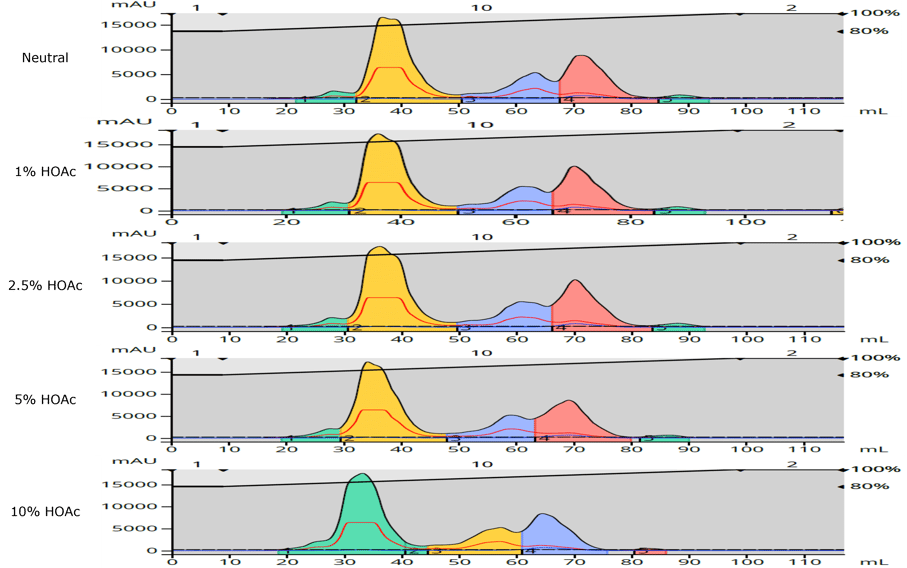Reversed-phase flash chromatography is extremely useful when purifying all types of compounds. Compounds that are charged or ionizable, however, typically need either a pH modifier (acid or base) or a buffer to better control compound retention, peak shape, and selectivity.
Synthetic and natural product chemists looking to purify their reaction mixture or extract by flash chromatography will also add acid to improve their purification. OK, but how much acid should be added to the mobile phase and what impact does increasing the amount of acid have on the separation? That is the question this post will attempt to answer.
To study this, I chose a natural product extract whose primary compounds contain at least one phenolic group. I looked at the effect of increasing acetic acid concentration (0%, 1%, 2.5%, 5%, 10%) on the separation of 50 mg of the extract using a 6-gram Biotage® Sfär C18 column and a 80-100% methanol/water gradient.
The results were not what I expected – reduced compound retention with some resolution loss with increasing acid concentration, Figure 1. I expected increased retention and a potential separation improvement as the acid should suppress ionization of the phenol group.

Figure 1. Acid concentration effect of the purification of a natural product extract. Increasing acid concentration decreases compound retention and reduces the separation between eluting compounds.
So, why did this occur? My supposition is that rather than suppress ionization, the acid disrupted the hydrogen bonding between the different phenolic compounds (intermolecular) which are in high concentration (500 mg/mL), thus decreasing the overall hydrophobicity of the compounds.
What is the take-away from this? Unless your chromatographic peaks front or tail under neutral pH conditions, avoid adding pH modifiers when performing flash chromatography.
Interested in learning more about flash chromatography? Download our whitepaper Successful Flash Chromatography.

 Organic Workflow
Organic Workflow Peptide Workflow
Peptide Workflow Scale-Up Flash Purification
Scale-Up Flash Purification  Sample Preparation
Sample Preparation Biomolecule Purification
Biomolecule Purification Oligo synthesis
Oligo synthesis Scavengers and Reagents
Scavengers and Reagents Service & Support
Service & Support Accessories & Spare parts
Accessories & Spare parts Investors
Investors Reports & News
Reports & News The Share
The Share Corporate Governance
Corporate Governance Calendar
Calendar Sustainability
Sustainability Our Offering
Our Offering Our History
Our History Our Locations
Our Locations Leadership
Leadership
